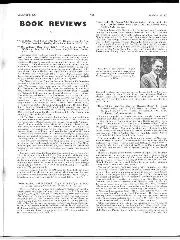
Book Reviews, December 1955, December 1955
'"The Motor' Road Test of 1955 Cars." 123 pp., 11½ in. by 8 in. (Temple Press Ltd.. Bowling Green Lane, London, E.C.1. 6s.) "'The Autocar' Road Tests 1955." 127 pp.,…
Few enthusiasts could have missed 2019 being the 60th anniversary of Aston Martin’s famous victory at Le Mans: the moment Aston briefly ruled the sports car world. Yet 1959 didn’t mark the start of something big, but the end. Team manager John Wyer had spent 10 years trying to win Le Mans and now his cars had conquered La Sarthe and bagged the World Sports Car Championship along the way.
But it had been a ruinously expensive process involving too many false dawns. Also, Aston Martin at last had its hands full making road cars: precisely the new DB4, with its Tadek Marek straight six.
All hands were required to keep up with demand, so much so that even when one half of its Le Mans-winning team – Carroll Shelby – came to Aston with an idea to put a Ford V8 in the DB3S, Wyer declined. It denied the prospect of the Aston Martin Cobra. Aston’s works team stopped racing.
But people still wanted to race Astons and the company was happy to take customer money in exchange for GT cars for the likes of John Ogier’s Essex Racing Team. Aston would even provide a degree of works support. At first the weapon of choice was the DB4 GT. Stirling Moss won with it in prototype form at Silverstone in May 1959 but said himself it was not a very significant race. It raced alongside the DBR1s at Le Mans that year, but ran with a 3-litre version of the Marek engine (unrelated to the 3-litre in the DBR1), which blew up.

The production DB4 GT was unveiled that autumn and with a lightened, triple Weber version of the 3.7-litre motor and big brakes, it both looked and sounded the part.
And as a privateer GT racer it was successful enough, even if the engine never had the 302bhp claimed (267bhp is more likely) leaving it short on the legs of Ferrari’s rival 250 SWB. Its best result came in the 1960 Goodwood Tourist Trophy where Salvadori and Ireland came second and third in Ogier’s cars, lapped by Moss in Rob Walker’s SWB.
A year later the DB4 GT Zagato arrived, Ercole Spada’s bodywork being lighter and allegedly more slippery. High-compression pistons helped a claimed power output of 314bhp which was probably closer to 285bhp. Yet despite those looks and the best efforts of Salvadori and Ireland, and even Jim Clark, it was again best of the rest behind Ferrari. Ogier’s cars were 1 VEV and 2 VEV, which became among the most famous racers of the era. But neither beat the Ferraris, not even 2 VEV after it had been written off by Lucien Bianchi at Spa in 1962 and ‘reborn’ as a new ‘DP209’ lightweight. Both retired at Le Mans in ’61 while Moss again won the TT in the 250 SWB, lapping Salvadori and Clark.
In 1962 the game changed, Ferrari persuading the authorities to homologate the 250GTO as a GT car. And if the Zagato had been outgunned by the SWB, it stood no hope against the GTO.
Aston was under pressure to produce a proper racing car that went far further than either the DB4GT or Zagato and take the fight to Maranello.
Enter the Project Cars…
